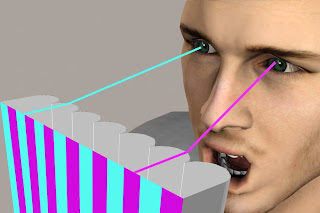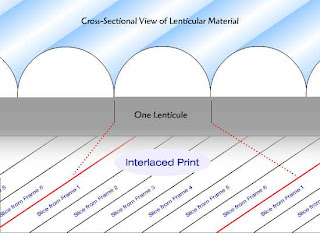by Peter J. Sucy
Most likely I’m not the first to have coined this term, but I’ll attempt to explain what I believe it is and why I’ve chosen it as my primary medium. For you photographers out there, virtual photography offers a photographic tool set unlike any you would ever find in the real world.
Imagine you had a studio where the laws of physics don’t apply. In this studio your camera does not need a tripod and is not affected by gravity. If you put your camera in a spot it will stay there, no one can accidently bump into it except maybe you.
Now imagine that the camera has a zoom lens with a range of 5mm to 1600mm. The f-stop is and shutter speeds are adjustable but every image can be properly exposed no matter what the settings. There is a switch to turn off depth of field so everything is in focus at any f-stop. This camera can even be programmed to follow a path over time, moving through space by itself and recording frames (at a rate selected by you) as it goes. Just about every setting can be manipulated over time as well so you can zoom and pull focus while moving for example.
Your lighting system is even more magical, your lights can be placed anywhere you need them and they won’t show up in your scene, except by their illumination, no potentially dangerous and unsightly light stands and cords. You can change a light from a variable angle spotlight, to an immense soft box, to a point source (great for getting light into those hard to reach places) or even an infinite source like the sun. Every light’s brightness and color can easily be set with a few dials, Each light can have it’s shadows turned on or off, made soft or sharp and even apply gels and effects like mist and fog. The spotlights can even be configured to automatically point at and follow any object in the scene as it moves.
Now here is where it really begins to get exciting. Imagine you could buy a highly detailed set like a city block consisting of several buildings, a street and an alleyway, or a futuristic sci-fi set of a spaceship interior for under $30 and have them delivered to you in minutes without ever leaving your chair.
The same goes for actors/models, backdrops, scenery, costumes, props, and even lights. There are numerous online establishments that provide everything you could imagine for your magical studio. Numerous male and female characters, clothing and period costume, sets, props and more to create your own virtual visions.
These actors are extremely cooperative, posing just the way you want them and holding perfectly still for as long as you want. You can buy libraries of pre-set poses and change the actors pose with a click of a button. Move your timeline out a few seconds and select a different pose and you have just created an animation of the character moving from one pose the other over the time you set on the timeline.
Once you’ve orchestrated your set, the lighting, the actors and framed your scene with your camera you are ready to take the picture. You can choose to produce a single frame or create an entire movie.
Is this some future speculation? No, you can have your own virtual studio today. All you need is a 3D modeling/rendering software program for your PC like 3DMax, Poser, Strata3D, Bryce, Vue or numerous others that are available. Many offer free trials and there are even free 3D programs available.
Daz3D (one of the larger content providers) offers their Daz Studio software free for the download (they want you to buy their content of course).
Content Paradise another online 3D content provider is currently offering the previous version of Poser (a popular 3D studio program designed primarily for human figure models) for $29.00 or the current version for only $99, both great bargains. The programs I mentioned also come with quite of content built in so there are figures and props to work with right out of the “box”.
Renderosity is probably the largest content provider with hundreds of artists providing thousands of models and textures for you to buy and download. All of these sites serve as communities for thousands of artists and many offer online tutorials and forums where you can ask questions and get answers from some very talented artists. There are also user galleries where you can post your work for all to see and comment on.
My 3D work became much more productive when I discovered these communities and content providers. Many of my early 3D scenes took months and a few even years because I had to build and texture all my own models. Now a days I can usually complete an entire 3d scene in less than a week because I can buy most of the models I need and re-texture them if needed. The entire set and prop budget for many scenes is usually well under $100.
I’ve found that my field photography has also much improved with the experience gained in the virtual studio. So if you’re looking for something to do when your stuck at home consider getting yourself a virtual studio. If you already have the computer it’s pretty cheap to get into as long as you avoid becoming addicted to buying new content.
 A Very Simplified Illustration - The cyan stripes represent View 1 and the magenta stripes View 2. Most lenticular prints are made from anywhere between 10 - 30 views. (It was too much work to make even 10 stripes per lenticule)
A Very Simplified Illustration - The cyan stripes represent View 1 and the magenta stripes View 2. Most lenticular prints are made from anywhere between 10 - 30 views. (It was too much work to make even 10 stripes per lenticule)




